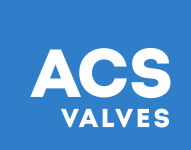
If you were to travel around the world and order a hot dog in each major country, you’d learn that there are almost infinite ways to enjoy the staple street food. That leaves you with a lot of topping choices to customize one delicious dog.
Rotary valves don’t have much in common with hot dogs, but they are also highly customizable – provided you have help from experts who know conveying systems inside and out.
Here are 5 key ways we customize rotary airlock valves at ACS Valves:
- Valves: We have dozens of rotary valve models to choose from, whether you’re dealing with small batches, high volumes, gravity-flow applications or sanitary material, to name just a few.
- Rotors: The size and pattern of grooves, the shape and number of vanes, the materials of construction, and even the composition of rotor tips can all affect material flow.
- Coatings: While some coatings have multiple properties, they generally do two things very well: protect the valve and prevent material buildup.
- Kits: You can equip your valve with a kit designed to boost safety, monitor rotation speed or help material move more efficiently.
- Accessories: We have accessories to prevent shearing or jamming, protect operators from hazardous moving parts, release air pressure, or improve ease of maintenance.
Typically, our customer service or technical support representatives recommend a valve configuration based on parameters such as material characteristics and conveying line setup. Our expertise in pneumatic conveying helps us determine exactly what you need.
Read on for some common examples of valve customization.
My material is…
Somewhat abrasive and hygroscopic
Example: Flour
If the material you’re conveying tends to absorb moisture, a stainless-steel rotor will be easier to keep clean. A hard chrome interior bore and endplates will provide enough protection for mild to moderately abrasive materials.
Moderately abrasive
Example: Grains
For the next step up in abrasion protection, a hard chrome interior bore and endplates will serve you well. You should also use a rotor constructed from AR400 steel, which is a high-carbon alloy designed to protect against wear in more abrasive applications.
Extremely abrasive
Example: Gravel, cement
Tungsten is a notoriously tough metal used in industrial, tech and military applications, which makes it an excellent coating for rotary valves. A very abrasive material may require a tungsten coated interior bore, endplates and rotor. For the most aggressive materials, we often go with a robust AR400 steel rotor underneath the tungsten coating.
Abrasive, sticky and/or corrosive
Example: Salt, sugar
Some materials are moderately abrasive, corrosive or adhesive – or, in some cases, all of the above. This is where a specialized coating like XTR-Coat really shines. Its hardness is comparable to hard chrome, but it has the added advantage of preventing materials from sticking or corroding the valve’s internals – and it’s also FDA-compliant.
Granular or bulky
Example: Pellets, flake or regrind
Shearing or jamming can be a concern with these types of materials, so we recommend adding an inlet shear protector to the rotary valve. Shear protectors come in several styles to suit limited stack-ups, but for drop-through valves, we tend to prefer the adjustable inlet spool style. Its flow plate design allows operators to manually adjust the opening to suit their required rate of material flow. Since that one is only available for square inlets, we have a non-adjustable spool style shear protector for round valves, which comes in handy when your conveying line configuration does not allow for a pellet feeder.
In need of more uniform flow
When accurate, continuous distribution in the flow of material is a high priority, a staggered pocket rotor is the key. With 16 offset pockets and mild or stainless-steel construction, the rotor ensures your material flow rate stays uniform and consistent.
Need help customizing?
Since we’re based in Canada, our custom hot dog is apparently this one with cheese curds, maple mayo and apple slaw. If you’re not hungry or are just looking for your best rotary valve configuration, give one of our customer service reps a call. We’d be happy to put together a valve that is uniquely yours.


